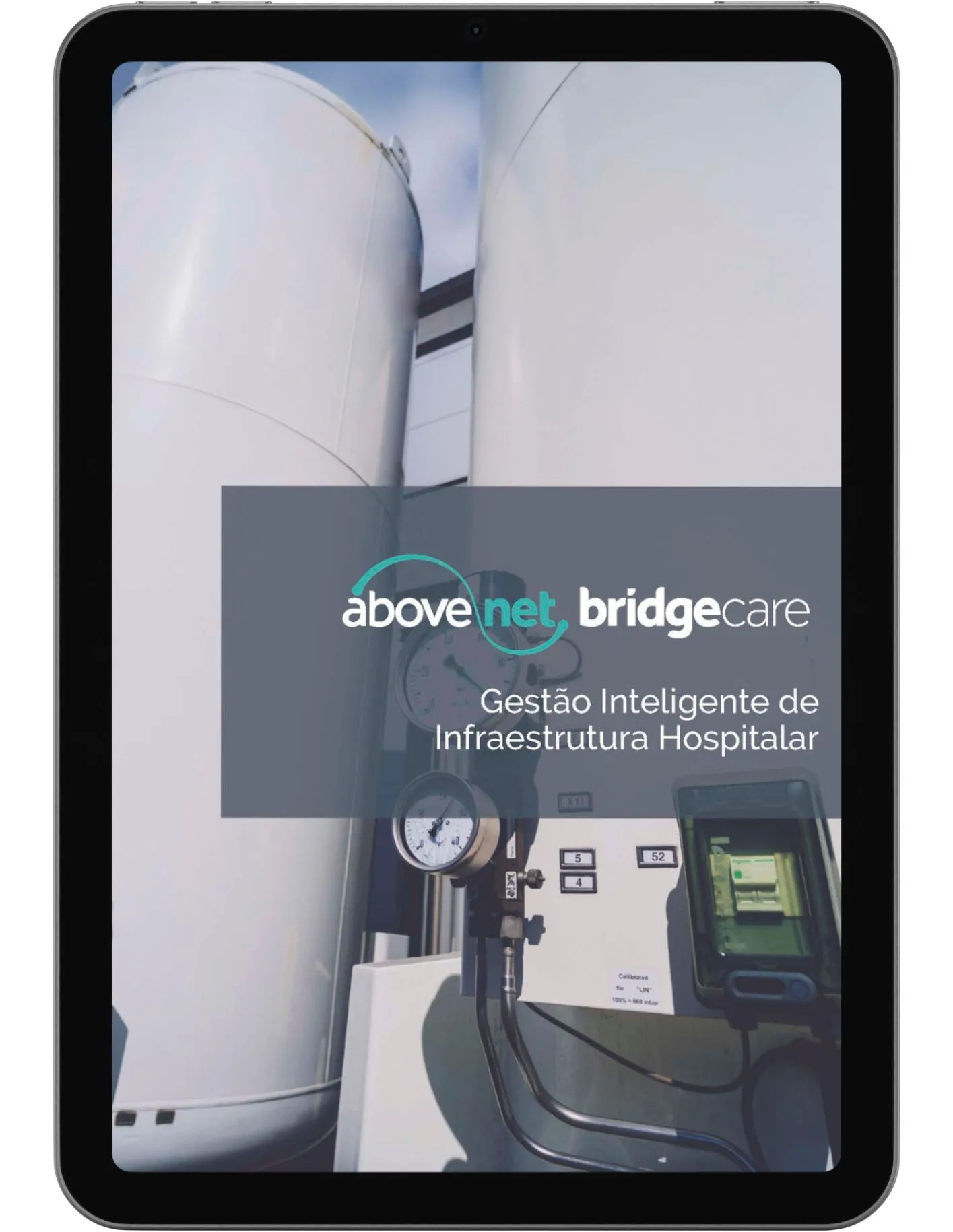In the healthcare field, hospital infrastructure plays a crucial role, not only in ensuring the efficiency of daily operations, but also in protecting valuable equipment and, most importantly, in safeguarding the lives of patients.
A recent case study conducted by Above-Net in the medical field powerfully illustrates the risks associated with the lack of adequate monitoring of high-cost equipment with a significant impact on operations, initially focused only on basic temperature and humidity control in the environment. This highlights the critical need to implement efficient solutions that can act proactively.
The Challenge Faced
The case in question involves a hospital that suffered significant losses due to damage to hemodynamic equipment, a vital area that deals with the diagnosis and treatment of cardiological, neurological and endovascular conditions, using high-value imaging equipment. The cause of the defect was identified as excessive humidity in the room, which condensed on the equipment's circuit board, resulting in a short circuit. The failure was not covered by the warranty, as it was considered a violation of normal operating conditions, resulting in an estimated repair cost of R$140,000.
The Smart Monitoring Solution
This direct financial loss, although substantial, does not capture the full impact of the situation. The damaged equipment was out of operation, resulting in the inability to perform vital exams, directly affecting hospital revenue and, more seriously, patient care. The root of the problem? The lack of a critical environmental monitoring system, capable of controlling the room's temperature and humidity, something easily implemented with current Internet of Things (IoT) technology.
To solve this problem, Above-Net developed Bridgemeter , an intelligent hospital infrastructure monitoring solution. Bridgemeter is a platform that uses sensors, devices and software to monitor the critical variables of each infrastructure equipment, such as temperature, humidity, voltage, current, pressure, among others. It uses combined rules to perform predictive analyses, identifying trends, patterns and anomalies, and suggesting preventive or corrective actions.
Bridgemeter allows managers and technicians to access information in real time, through computers or mobile applications, being able to view control panels, graphs, histories, alarms and notifications. The platform also triggers automatic notifications for the maintenance team to intervene, before the failure becomes irreversible. Some examples of equipment that can be monitored by Bridgemeter are:
Compressors: The compressor is highly requested equipment that operates 24 hours a day with an estimated useful life of 30,000 hours. It is responsible for cooling the helium gas used in imaging equipment. The Bridgemeter monitors voltage, current, humidity, water temperature and compressor pressure to ensure the best operating condition.
Chillers: The “heart” of MRI. It must maintain the temperature between 8°C and 10°C. Normally, the chiller is installed in areas with little access, which makes it difficult to monitor. With Bridgemeter , you can monitor the temperature and condition of the chiller filters. At the sign of degradation that impacts operation, Bridgemeter sends alarms and tasks to schedule maintenance.
The ROI of Prevention
The case highlights the importance and value of investing in infrastructure monitoring systems. Implementing Bridgemeter is not just a preventative measure to protect valuable equipment; It is a financially sound strategy. The cost associated with monitoring is low compared to repair costs, lost revenue, and potentially loss of life due to non-operational equipment. Furthermore, it is highlighted that an intelligent and integrated monitoring system can offer a quick return on investment, safeguarding against significant financial and operational losses.
Another advantage of Bridgemeter solution as a service (SaaS) model . There is no need to purchase any equipment or system licenses. Simply choose the sensors or equipment to be monitored and the monitoring package.
Recommended Action
Hospitals and healthcare institutions must prioritize monitoring their most critical and valuable equipment and environments. Identifying infrastructure “gems” such as MRI equipment and hemodynamics areas and protecting them with dedicated monitoring systems is not just a best practice; it is an urgent need.
Adopting IoT technologies for continuous monitoring of temperature, humidity and other critical parameters is a viable and affordable solution. These systems offer the ability to detect and warn about adverse conditions before they cause damage, allowing quick interventions and preventing substantial losses.
Conclusion
The case study of the hospital with damaged hemodynamic equipment serves as a clear warning for the healthcare sector. The lack of adequate monitoring of hospital infrastructure not only results in direct financial losses, but also negatively affects the provision of care to patients.
Bridgemeter is a robust and reliable solution, capable of monitoring critical operational variables, increasing safety and drastically reducing imaging equipment maintenance risks. With Above-Net 's IoT solution, hospitals can optimize the use of their resources, avoid losses and losses, and guarantee the quality of their healthcare services.

Catalog
Do you want to know more about how to carry out Intelligent Management of Hospital Infrastructure?
Then download our catalog to explore how IoT monitoring of Hospital Infrastructure improves patient care. Discover intelligent preventative monitoring solutions with Bridgemeter .
Read too:
IoT and Hospital Infrastructure
Intelligent Operational Management of Hospital Infrastructure


